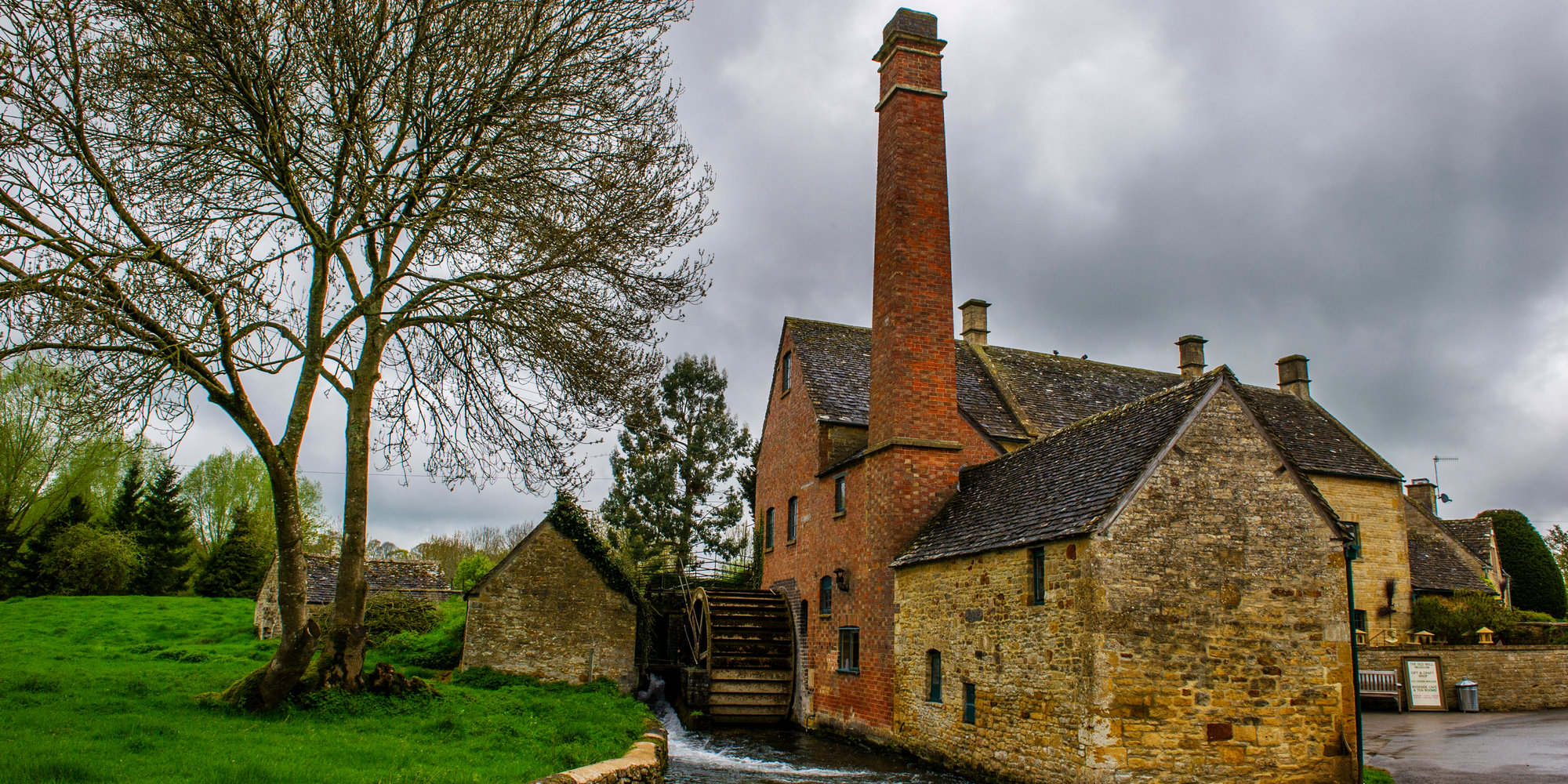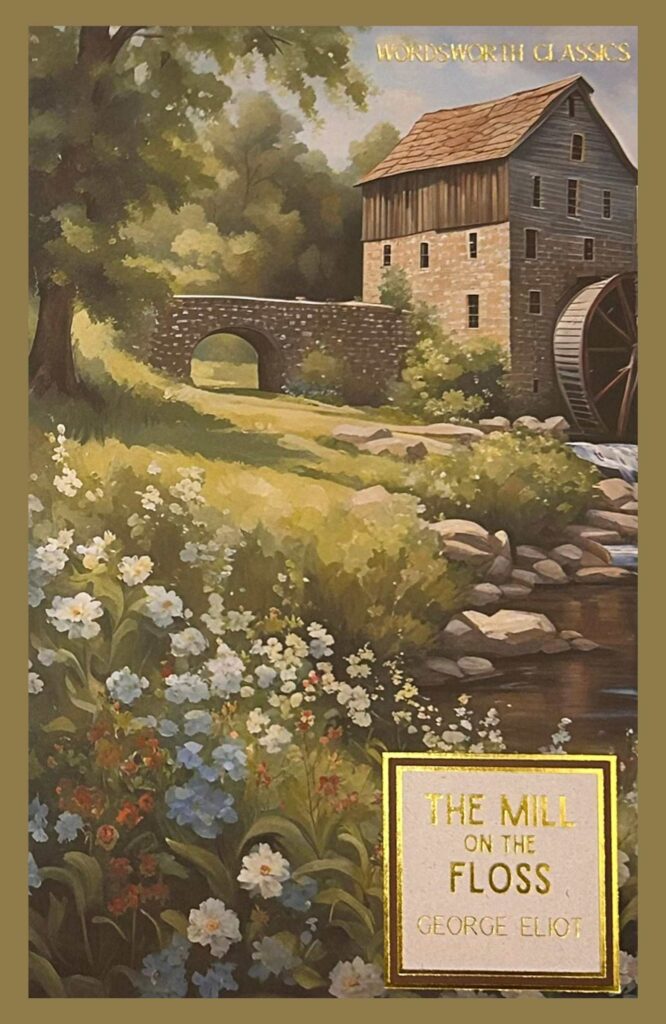
Sally Minogue looks at The Mill on the Floss
‘In their death they were not divided’: Sally Minogue takes a look at ‘The Mill on the Floss’ in the bicentenary year of George Eliot’s birth.
My title’s not giving anything away: that quotation forms the epigraph of The Mill on the Floss, and it is also the novel’s final sentence. Eliot thus announces the fatal ending of the key relationship in this novel before we ever begin reading. In doing so she also announces a central theme of the work, the relationship between determinism and free will, though it is only through the intricacies of plot and the exploration of human relationships, the business of human life itself, that its philosophical complexities emerge. First and foremost, this is a novel about human action caught in the mills of social convention and swept up by the larger movements of nature, with an actual river, the Floss, at its centre.
It’s no accident that the location of the novel is a meeting of waters, that of the major river Floss, and it’s tributary the Ripple – a name to remember, a small name, apt for the ‘lovely … little river …, with its dark, changing wavelets’. The ‘broadening Floss’ on the other hand ‘hurries on between its broad banks to the sea, and the loving tide, rushing to meet it, checks its passage with an impetuous embrace’. Romanticised, even anthropomorphic, as Eliot’s language is here, the geographic features neatly contained in this description will be significant. The opening of the novel characterises Eliot’s method: the actualities she describes are the bedrock of her larger meanings. The one never supersedes the other and often they intertwine so that in the act of reading we are imbibing both the particular and the metaphoric without necessarily distinguishing between them.
The Mill on the Floss is Eliot’s third work of fiction. First came Scenes of Clerical Life (a collection of long stories rather than a novel) in 1857, when she assumed the male pseudonym she then retained for all her novels; then her first proper novel, Adam Bede, in 1859. She had already begun work on The Mill on the Floss when Adam Bede came out. Its warm reception – The Times called it ‘first-rate’ and asserted ‘its author takes to rank at once among the masters of the art’ – must have been encouraging but also daunting since now there were expectations placed upon her as a novelist. Of course, at that point, the reviewer didn’t know that author was a woman, though Charles Dickens, reviewing Scenes of Clerical Life, had guessed at its female authorship. When Eliot sent him a copy of Adam Bede in July 1860, she revealed to him her female identity, which Dickens promised to keep secret.
This seems extraordinary to us now. After all, Mary Anne Evans (later Marian Evans) was already well known as an intellectual, had published a number of scholarly translations under her own name, and had flouted Victorian convention by living with George Henry Lewes, who was married. At the same time, the practice of female novelists adopting male pseudonyms was common at this time – so common that reviewers, such as Dickens, were alert to the possibility. I confess that I now find it difficult to think of George Eliot as anything other than George Eliot, though in that name I still of course think of her as the woman she was. I identify the woman author and her novels with the name, and so ‘read’ the name as female rather than male. But perhaps it is now time to revert to Marian Evans (her chosen personal name in adult life) when referring to this author, and I’ll do this for the rest of this blog.
Whatever the politics of Evans taking on a male pseudonym, The Mill on the Floss is notable for placing a female character at its heart, and indeed for making her the centre of her own bildungsroman, tracing the development of her life and character in the same way so often done for male characters. But as Rohan Maitzen points out in an interesting online article for the British Library (https://www.bl.uk/romantics-and-victorians/articles/the-mill-on-the-floss-as-bildungsroman), ‘a girl’s journey to adulthood … [unlike a boy’s] was likely to be less a triumphant journey than a series of collisions with society’s restrictions’. Maggie Tulliver’s collisions start very early; she is ‘gone nine’ at the start of the novel, and already seen as ‘too ’cute [intelligent] for a woman’ by her nonetheless doting father; ‘like a Bedlam creatur‘’ by her mother; and as ‘this small mistake of nature’ by the narrator. Her character inevitably recalls that of Jane Eyre, created some thirteen years earlier, with whom the widely read Evans would have been familiar. Like Jane, and like Eliot herself, Maggie is deeply devoted to books. But naturally, it is her beloved brother Tom who gets the education, while Maggie continues on her collision course with life. We think much about Maggie through the course of this novel; she is undoubtedly its hero/ine, if a tragic one. But Tom deserves some of our attention too. As dull as Maggie is bright, he suffers by comparison with her. Given all the advantages of the favoured boy, he is well aware he doesn’t come up to the mark. In the worst of all worlds, Maggie’s quick wit points up his lack of it, yet she can only suffer from that rather than gain. Both lose, and in so doing they lose that first fine careless rapture of their childhood love for each other.
However, if this is a double bildungsroman as Maitzen suggests, it is Maggie who takes centre stage. She it is who drives the action even when she’d rather not. Her uncertain relationship with PhilipWakem, in which she tries out the business of feeling for another person other than Tom, is overswept by the wave of emotion she has for Stephen (as he for her). It seems too obvious to say that the great flood of love and desire that they have for each other is embodied in the way they are carried on the river’s tide towards their great fate. I can only say that Evans renders it otherwise. There is nothing obvious about the way this chain of events develops. It is the flow of the river that takes them beyond a point of choice, but thereafter Maggie’s conscience in conflict with her desire leads to her decision that she and Stephen can go no further. There is nothing simple in the passages that deal with this; we feel the desire, the acquiescence, the anxiety, the pain. We are not even sure, as readers, that Maggie is right in her eventual refusal of Stephen, though she is presented as that. And then she has to suffer the ignominy of a social and moral judgement which is undeserved and which does not even have an answering satisfaction.
By twenty-first century standards, Maggie is made to suffer too much. She is the sacrificial victim of a novel which holds her up as hero/ine then drowns her in her own passion. And poor old Tom has to go with her. But – when I first read this novel, at (a young) sixteen, I saw that final drowning embrace of Maggie and Tom as something wonderful. I don’t see it quite like that now. But I think there is something pure there in Evans’ fictional intentions: to show us an overwhelming love which can find its apotheosis only in death. That is a highly Romantic idea, and not in keeping with Evans’s rationalism. But I think we can free it from the deterministic metaphor of the flood, and see it as purely itself. In the novel’s penultimate chapter, Maggie actually takes the decision to take the boat on the flood, and even though the waters take her as they did on her journey with Stephen, she directs the boat towards the Mill, seizing her oars, standing up to paddle. She wants to save Tom and her mother, and for now, all her energies are directed to that. She takes a decision, against the flood.
Perhaps after all collision is not the right word for Maggie’s relationship with life. In that chapter, ‘The Final Rescue’, the novel’s narrator describes her ‘wrestling for patience’ as she strives for some sort of equanimity of spirit. That struggle is made much harder by Stephen’s appeal in his letter to ‘Write me one word – say “Come!” We are always in sympathy with Maggie because she is in constant struggle with herself. Like Jane Eyre again, when Rochester appeals to the power of love and desire over convention, Maggie is deeply tempted. There is a note of true realism when she sees before her a whole life of inner struggle, and cries out against her own youth and health, which will make that struggle long. As the narrator says, ‘what repose could Maggie ever win except by wrestling?’
From that point of view, her watery death is a release. For the modern reader, it may seem a moralistic device. But in the author’s novelistic world where the real and the metaphorical combine, we can read the final sentence of the penultimate chapter as saying exactly what it means: ‘brother and sister had gone down in an embrace never to be parted: living through again in one supreme moment the days when they had clasped their little hands in love and roamed the daisied fields together’.
Books associated with this article
